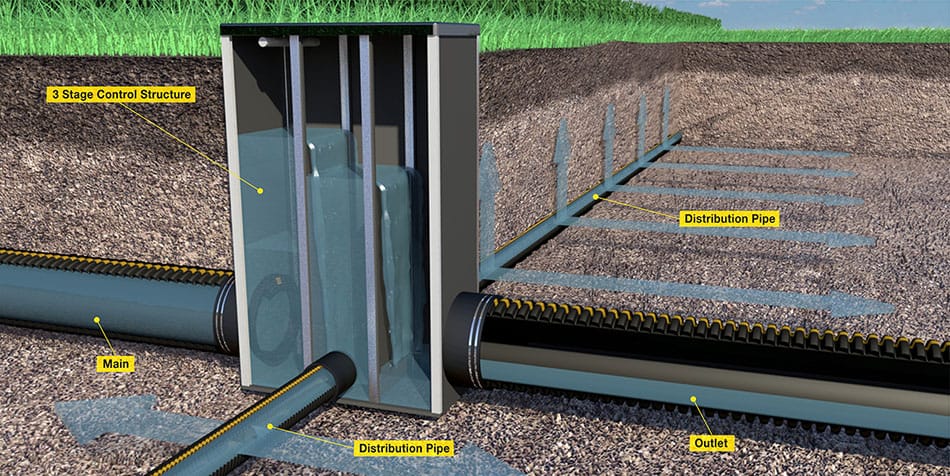
Saturated Buffer
Practice Overview
Tile water is diverted into perforated pipe running parallel to an open ditch or stream that has a suitable vegetated buffer. As water moves through the buffer toward the stream, the organic matter in the soil naturally utilizes the nitrates in the water, converting the nitrate to nitrogen gas.
Benefits
- Denitrification – up to +50% reduction of total load
- Reduced peak flow to ditch
- Can be retrofitted on systems with applicable buffers/outlets
How It Works
Edge-of-field water control structures on a filter strip diverts drainage water into perforated pipes that run along the buffer/stream bank. As water moves through the soil profile, plant roots and other organic matter in the buffer absorb the water and any usable nutrients before they get to the open ditch.
In times of high flow, the water can bypass the buffer by flowing over the stoplogs to a traditional tile outlet. This bypass ensures the water table isn’t backed up too far into the field, so the tile system functions as a typical controlled drainage system.
Installation Considerations
- Minimum buffer width of 30-ft
- Minimum organic matter content of 1.2% in the top 2-ft buffer
- No gravel/sand veins through buffer
- Limit number of surface inlets
- Debris in tile lines may plug system